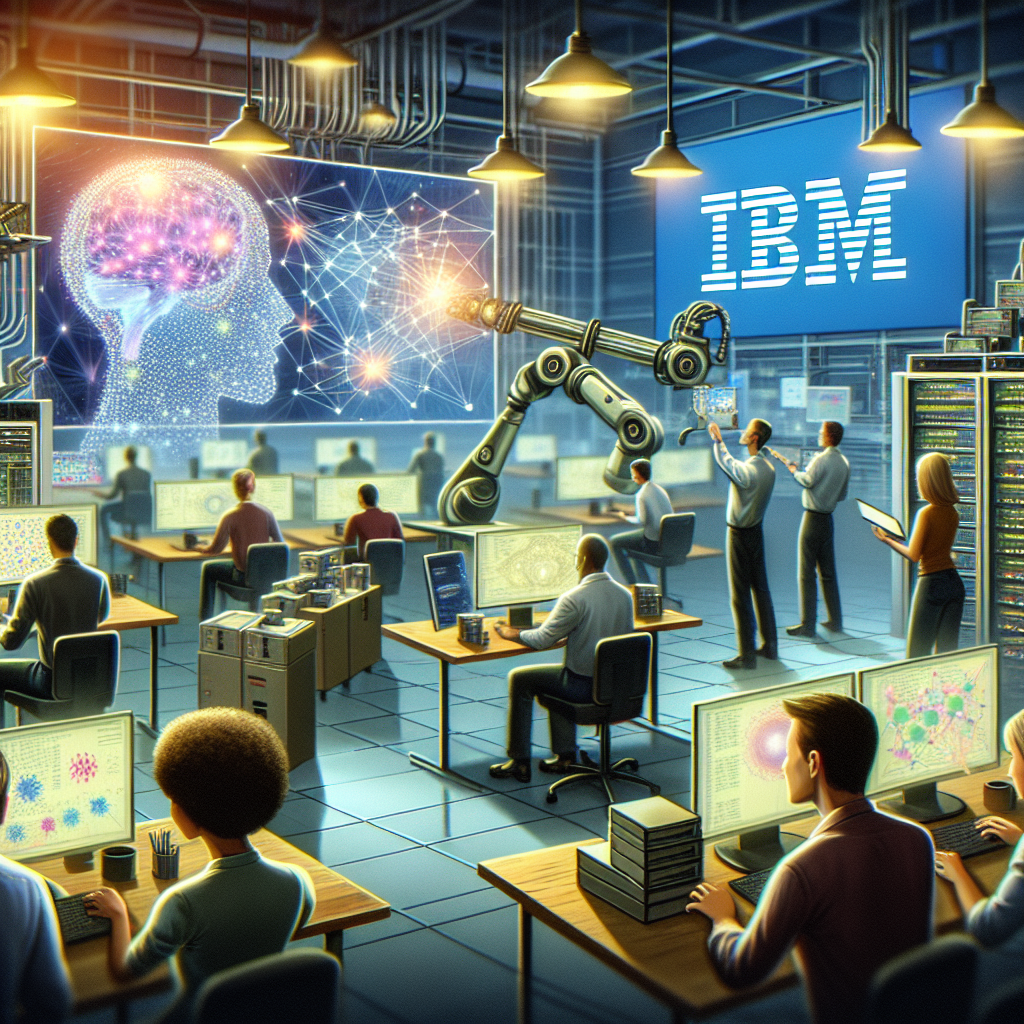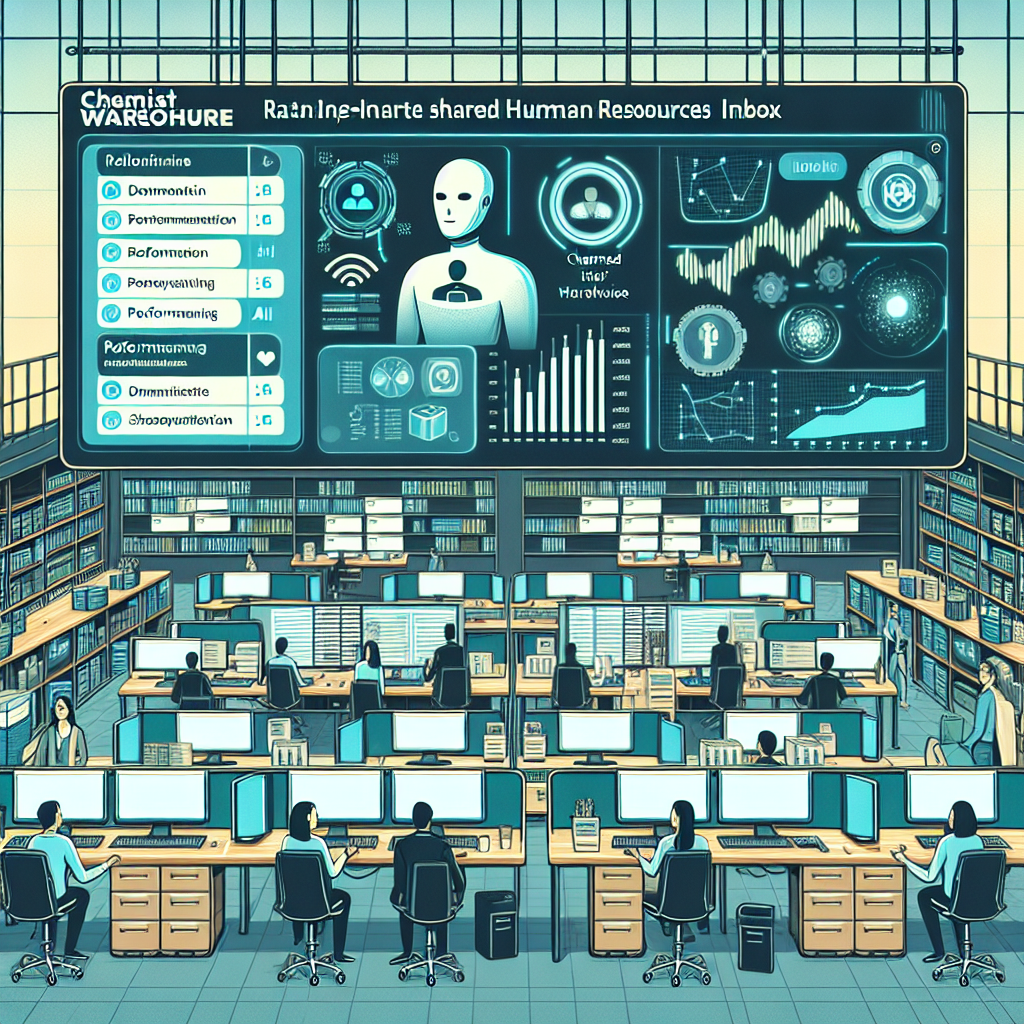-
Meta partners with Midjourney to license AI tech for future products

In a strategic move to enhance its competitive edge in the rapidly evolving landscape of artificial intelligence, Meta has officially partnered with generative AI lab Midjourney. This collaboration focuses on licensing Midjourney’s cutting-edge “aesthetic technology” intended for future applications within Meta’s diverse product lineup. As leaders in the tech space vie for supremacy, this partnership could mark a significant turning point in how Meta leverages AI to redefine user experiences across its platforms.
Announced on August 24, 2025, this partnership emphasizes Meta’s dedication to innovation and its ambition to enhance the visual quality of its offerings. Alexandr Wang, Meta’s Chief AI Officer, made it clear that the integration of Midjourney’s technology with Meta’s own AI research efforts is a vital step forward. By linking their research teams, the two entities aim to foster creativity and enable more dynamic capabilities that could profoundly impact how users interact with Meta’s products.
The decision to collaborate with Midjourney is particularly relevant given the fierce competition Meta faces from well-established players such as OpenAI, the creator of ChatGPT, and tech giant Google. This cloud of competition casts a long shadow, but by leveraging Midjourney’s advanced image generation capabilities, Meta aims to carve out a new niche that could set it apart.
Midjourney has garnered a reputation for its ability to produce high-quality images from textual prompts, a feature that could become an invaluable asset for Meta. Integrating this technology may accelerate the development of creative features, enabling users—be they individuals or marketers—to generate engaging content with greater ease. This could lead to substantial reductions in content production costs while simultaneously enhancing user engagement across various platforms.
Wang’s enthusiasm for Midjourney is palpable, as he expressed admiration for the startup’s innovative approach. In a recent post, he emphasized that to deliver the best products, Meta must harmonize top talent, a robust computing infrastructure, and strategic partnerships with industry leaders. This collaboration is not just about technology; it represents a broader strategy that underpins Meta’s entire approach to AI development.
The move towards a partnership with a specialized entity like Midjourney also signals a shift in Meta’s internal focus. Following some organizational disruptions, including high-profile departures and a lukewarm response to its latest open-source model, Llama 4, the company’s rebranding of its AI initiatives under Superintelligence Labs demonstrates its commitment to revitalizing its AI capabilities. This pivot is crucial in a climate where advancements in AI technology are occurring at unprecedented rates.
By harnessing Midjourney’s technology, Meta could not only improve its product offerings but also find ways to engage users more effectively through visually rich content. This collaboration could lead to exploring new avenues for monetization, as enhanced user engagement is often a precursor to increased advertising revenue and subscription services.
Moreover, as the digital landscape continues to shift towards immersive experiences, the convergence of AI and visual storytelling provides Meta with a fertile ground for innovation. Users are increasingly seeking engaging content that not only informs but resonates emotionally. Midjourney’s technology aligns perfectly with this trend, allowing for more personalized and visually compelling experiences that could ultimately drive platform loyalty.
While both Meta and Midjourney have yet to provide further details on the rollout of this collaboration or specific timelines for implementation, the anticipation surrounding this deal is already palpable. As businesses and consumers alike move towards an increasingly visual-centric digital world, the ability to generate high-quality images quickly and cost-effectively could redefine how brands communicate and engage with their audiences.
In conclusion, the partnership between Meta and Midjourney could potentially transform the way we experience social media and digital content creation. This deal exemplifies how strategic collaborations can lead to remarkable advancements in AI technology, ultimately shaping the future of digital interaction.
-
Nvidia GPUs and Fujitsu Arm CPUs will power Japan’s next $750M zetta-scale supercomputer — FugakuNEXT aims to revolutionize AI-driven science and global research

Japan is on the verge of a technological renaissance with the introduction of FugakuNEXT, a groundbreaking supercomputer designed to transcend traditional computational limits. Announced in a striking ceremony on August 22 in Tokyo, this initiative marks a key partnership between RIKEN, Fujitsu, and Nvidia, uniting Japanese engineering prowess with cutting-edge GPU technology from the United States.
Fugaku, the predecessor supercomputer that came online in 2020, set a high bar by holding the title of the world’s fastest for two consecutive years. Its capabilities played a pivotal role during the COVID-19 pandemic, assisting researchers in running simulations that informed global health responses. Although it still ranks as the seventh fastest supercomputer worldwide, Japan is now strategically positioning itself for the future with FugakuNEXT, which is set to debut around 2030 at RIKEN’s Kobe campus.
This ambitious project comes with a hefty development budget exceeding 110 billion Yen (approximately $740 million USD). It is not just a numeric upgrade; it represents a new era in Japan’s computational history, following a lineage of notable systems like the Earth Simulator and the K computer. Each of these machines has played a crucial role in the evolution of computational science.
What sets FugakuNEXT apart from its predecessors is its hybrid architecture, which will centralize GPUs in its design. Specifically, Fujitsu will introduce its new MONAKA-X CPUs, while Nvidia will contribute GPUs and assist in developing the interconnect fabric using NVLink Fusion—a cutting-edge, high-bandwidth connection method between CPUs and GPUs. This innovation not only enables traditional simulation workloads but also pivots the supercomputer towards next-generation AI applications.
RIKEN has set ambitious benchmarks for performance with FugakuNEXT, forecasting a fivefold increase in hardware capabilities compared to the original Fugaku, and a staggering twentyfold improvement in software efficiency through advanced optimizations. Techniques such as mixed-precision computing and physics-informed neural networks are anticipated to deliver up to a hundredfold enhancement in practical applications, catering to the evolving demands of contemporary scientific research.
Initial performance targets project peak capabilities around 600 exaFLOPS in FP8 sparse precision, placing FugakuNEXT in a position to potentially become the first zetta-scale supercomputer in the world. Remarkably, RIKEN has confirmed that this performance leap will occur within the same energy constraints as Fugaku, reinforcing the project’s commitment to energy efficiency.
Beyond mere performance, FugakuNEXT embodies a profound conceptual shift in how supercomputing integrates with artificial intelligence. RIKEN envisions this machine as a model platform for “AI for Science,” thereby automating various stages of research—from hypothesis generation to experimental validation. This integration promises accelerated discovery across vital domains like climate modeling, drug development, disaster resilience, and advanced manufacturing.
Moreover, Nvidia’s participation signifies a collaborative commitment to pushing the boundaries of what is possible in high-performance computing and AI. The partnership aims to leverage each organization’s strengths, driving not just advancements in hardware but also innovations in methodologies applicable to urgent scientific challenges.
In conclusion, FugakuNEXT is not just a supercomputing system; it is an ambitious endeavor that seeks to redefine the landscape of scientific research and AI collaboration. With its projected capabilities and energy efficiency, it heralds a new era of computational power that could unlock unprecedented discoveries across various scientific fields. As the world watches this project unfold, FugakuNEXT stands as a symbol of Japan’s dedication to reclaiming its status in the high-performance computing arena.
-
The Army wants AI to aid in vehicle repairs

The integration of artificial intelligence (AI) into military operations is not just a futuristic concept; it is rapidly becoming a reality. The latest initiative by the Army focuses on enhancing vehicle maintenance, particularly for the Infantry Squad Vehicle (ISV), a ruggedized version of the Chevy Colorado pickup truck. With the goal of optimizing maintenance processes, the Army is engaging in a project that involves feeding hundreds of hours of video recordings into a large language model (LLM), which is expected to transform how soldiers repair their vehicles in the field.
Alex Miller, the Army’s chief technology officer, provided insights into this strategy during a recent podcast with the Washington AI Network. He articulated his vision where soldiers will utilize AI-powered smart glasses to assist in diagnosing and fixing vehicle issues. This innovative approach aims to offer real-time guidance, allowing soldiers to navigate through complex repair procedures seamlessly. The initial phase includes training the AI with approximately 1,000 hours of footage of technicians performing maintenance, which can equip soldiers with the knowledge they need when faced with mechanical failures.
One of the standout features of this initiative is its dual approach to incorporating machine learning. Miller mentioned two versions of the support tools: the Smart Lookup, which leverages machine learning, and a generative component that allows for hands-on assistance. This integration aims to provide interactive and adaptive responses to soldiers in the field, ensuring that solutions are effectively tailored to various situations.
However, the venture is not solely about improving mechanical fixes. The Army is also seeking to digitize traditional support documentation, such as log books, which will streamline the maintenance process further. The desire for efficiency is paramount, especially when soldiers are deployed in challenging environments where time is critical.
An interesting challenge the Army is addressing is the heat generated by smart devices. With the potential of using smart glasses or other devices directly on their faces, it is crucial to ensure that these technologies operate without causing discomfort or overheating in the field. Such considerations highlight the Army’s commitment to soldier welfare alongside its drive for technological advancement.
This push towards incorporating AI in military operations aligns with broader trends in the Department of Defense, particularly following the recent release of a White House AI Action Plan. The Pentagon’s growing interest in generative AI has led to multiple substantial contracts, including several valued at $200 million that aim to streamline back-office tasks. This reflects a strategic shift where AI is seen as a critical component in not only enhancing operational efficiency but also ensuring sustained readiness and effectiveness in various military functions.
Moreover, the Army’s explorations of AI extend beyond maintenance tasks. They are considering the deployment of AI in high-stakes scenarios such as bomb disarmament and aerial operations, emphasizing the versatility and transformative potential of this technology in the military domain. The initiative underscores a forward-thinking culture within the Army, where the potential advantages of AI tools are not just theoretical but actively being tested and implemented.
Partnerships with tech companies have also become a priority, as the Army seeks to ‘look at boundary conditions’ and explore optimal applications of AI in threat assessment and other areas. The insights offered by LLMs promise breakthroughs in various fields, including material sciences and medical technologies, highlighting the vast opportunities for innovation. Miller’s statement about the Army’s willingness to engage in experimental projects suggests a collaborative approach that could yield significant returns for both military and civilian sectors alike.
In conclusion, the Army’s initiative to integrate AI into vehicle maintenance represents a significant step forward in military innovation. By leveraging advanced technologies like smart glasses and large language models, the military is not only enhancing its operational capabilities but also ensuring that soldiers are better equipped to handle challenges on the field. As the Army’s adoption of AI progresses, it will be interesting to observe the impacts on military efficiency and the broader implications for AI applications in other sectors, showcasing the potential for AI to revolutionize not just military operations but various industries as well.
-
Google Says It Dropped the Energy Cost of AI Queries By 33x In One Year

In a groundbreaking development that could reshape the landscape of artificial intelligence, Google has announced a significant reduction in the energy costs associated with its AI queries. According to a recent analysis released by the company, the energy consumption required for AI text queries has been slashed by a staggering factor of 33 in just one year. This remarkable achievement not only underscores the advancements in AI efficiency but also highlights the growing importance of sustainability in technology.
The data revealed in Google’s report indicates that each AI prompt now consumes approximately 0.24 watt-hours, a figure that is quite comparable to the energy usage of watching a television for just nine seconds. This reduction is a part of broader efforts by tech companies to address the environmental impact of their operations, particularly in contexts where extensive computational power is required, such as machine learning and AI processing.
This development comes at a critical time as the tech industry faces increased scrutiny over its energy consumption and carbon footprint. With AI applications expanding rapidly across various sectors, the demand for efficient and sustainable technologies has never been higher. Google’s commitment to reducing the energy requirements of its AI systems not only enhances its competitive edge but also aligns with global sustainability goals.
Through innovation and optimization, the company has harnessed advanced algorithms and more efficient hardware to achieve this milestone. By decreasing the energy cost per query, Google not only reduces its operational expenditures but also sets a new standard for environmental stewardship in tech. Such reductions are essential as AI continues to proliferate in areas such as natural language processing, computer vision, and data analysis.
In 2023, as businesses increasingly turn to AI to drive insights and automate processes, the implications of this reduction are significant. Companies now have the opportunity to leverage powerful AI capabilities without the accompanying high energy costs, making the technology more accessible and commercially viable. This shift could democratize AI, allowing smaller enterprises to utilize these advanced systems without the burden of substantial energy expenditures.
Moreover, this progress emphasizes the potential for further innovations in the field of AI. As Google’s reduction in energy consumption serves as a benchmark, other companies are likely to follow suit in re-evaluating their own processes to enhance efficiency. This trend could lead to a cascade of advancements across the industry, driving a wave of innovation toward sustainable AI practices.
As businesses and investors look toward the future, understanding the intricacies of such advancements will be crucial. The convergence of AI efficiency and environmental responsibility presents unique opportunities for investment in burgeoning technologies that prioritize both economic and ecological balance. Differentiating between companies on the basis of their energy consumption can become a pivotal factor in the investment landscape.
In conclusion, Google’s achievement in reducing the energy cost of AI queries by 33 times marks an important milestone not only for the company but for the entire tech industry. The alignment of business practices with sustainable goals is not just a modern necessity but a potential hallmark of future success. As technology continues to evolve, the balance between innovation and sustainability will play a critical role in shaping the future of AI and its applications across various sectors.
-
IBM To Drive AI-Powered Managed Services Transformation At Vi

In a transformative partnership, Vi (Vodafone Idea) and IBM have unveiled plans to reshape the telecom landscape by harnessing the power of artificial intelligence. This collaboration is set to streamline operations, enhance service reliability, and significantly enrich customer experience. Central to this initiative is the establishment of an AI Innovation Hub, which will act as a beacon of modernization for Vi’s IT and business processes.
The AI Innovation Hub represents a significant development in Vi’s digital strategy. Experts from both Vi and IBM Consulting will converge in this hub to co-create innovative AI solutions, automation tools, and digital accelerators, all infused with IBM’s cutting-edge AI capabilities. By integrating these solutions, Vi aims to not only improve operational efficiency but also to advance a unified DevOps execution model that relies heavily on automation.
Jagbir Singh, the Chief Technology Officer at Vodafone Idea, emphasized the critical role that this hub will play. He stated that the AI Innovation Hub is vital for modernizing operations and speeding up the execution of essential business initiatives. This focus on agility and speed aims to optimize software development cycles, which is crucial in the fast-paced telecom industry where responsiveness is key.
The historical context of this partnership adds another layer of significance. The collaboration between Vi and IBM has been flourishing for over 17 years, and this announcement signifies a major leap in their ongoing relationship. Rishi Aurora, Managing Partner of IBM Consulting India & South Asia, remarked on the importance of this collaboration, noting that it is a pivotal moment in demonstrating how AI and automation can fundamentally transform telecom operations on a grand scale.
At the heart of this initiative lies a commitment to accelerate Vi’s time-to-market through the adoption of unified DevOps practices. This approach not only aims to present new growth opportunities for the company but also to establish a robust and resilient IT ecosystem. The synergy between AI and DevOps is designed to create rapid and seamless digital experiences for customers, re-affirming the importance of customer-centric service delivery in today’s competitive environment.
The implications of this collaboration are profound. By leveraging AI, Vi is taking a decisive step towards enhancing its operational capabilities and optimizing service delivery. The deployment of AI solutions within a cohesive DevOps framework not only promises efficiency but also positions Vi as a frontrunner in a rapidly evolving digital landscape.
In conclusion, the partnership between Vi and IBM marks a noteworthy chapter in the evolution of telecom services. With a commitment to innovation through AI and automation, this collaboration is poised to redefine industry standards, paving the way for a future where digital experiences are not just a feature of service delivery but the cornerstone of operational strategy.
-
Chemist Warehouse runs AI on HR shared inbox

The implementation of artificial intelligence (AI) in the workplace is becoming increasingly prevalent, and Chemist Warehouse, a leading discount pharmacy chain, is setting a notable example. In early 2025, the company launched AIHRA – AI HR Advisory – on their shared inbox dedicated to human resources (HR) queries. This innovative move is poised to transform how over 30,000 employees and store owners communicate HR-related inquiries by allowing AI to assist in drafting responses that HR staff can easily review and send.
After a rigorous 10-week development phase, Chemist Warehouse successfully integrated AIHRA into its HR operations, with further improvements rolled out in fortnightly cycles. This agile approach to development has enabled AIHRA to evolve from its initial “baby AIHRA” phase to what is now termed “intern AIHRA,” reflecting an increasing sophistication as the system learns from ongoing interactions with employees. Jessi Barberio, a human resources business partner at Chemist Warehouse, noted the tangible progress made with AIHRA and emphasizes the importance of continuous iteration and learning.
One of the key advantages of AIHRA is its capacity to interface with third-party data sources, such as Fair Work Australia. This integration allows the AI to access critical information regarding industry-specific award instruments and internal policies. As a result, AIHRA is effectively designed to handle low-to-moderate-risk HR topics, which include leave requests, probation periods, informal performance discussions, and the management of inactive casual employees.
The efficiency of AIHRA is particularly noteworthy; within just 30 seconds of receiving a query, AIHRA starts drafting a response. The drafted message is then waiting for an HR advisor to fine-tune and personal opinion before being dispatched to the inquirer. Furthermore, any relevant policies or forms are automatically attached to enhance communication clarity and thoroughness.
This strategic implementation could lead to significant operational savings for Chemist Warehouse. The HR advisory team is expected to save an estimated 1,950 hours annually, a considerable time reduction given that they handle around 300 email queries weekly, which can range from investigations and grievances to complex policy interpretations. Melissa Bear, the head of the people and culture advisory at Chemist Warehouse, confirmed this operational enhancement, showcasing a clear benefit of integrating AI technology into HR processes.
Barberio acknowledged that training AIHRA was a process that required time and dedication to refine its performance and ensure the output meets business expectations. The decision to publicize this advancement illustrates the profound value being realized through the AI integration. As Chemist Warehouse adopts a systematic approach to AI, they are focusing not just on short-term gains but also on developing a scalable governance framework that will support the company as it adapts and evolves in the digital landscape.
This governance strategy aims to align high-value use cases with the broader strategic ambitions of the organization while simultaneously fostering rapid value creation across various departments. The ongoing adjustments and learnings from the AI deployment are already generating quick wins that could serve as a blueprint for future technological integrations. This long-term vision, paired with immediate operational benefits, positions Chemist Warehouse to continually evolve and remain competitive in the dynamic retail sector.
The AIHRA initiative at Chemist Warehouse is a compelling case study demonstrating how businesses can effectively leverage technology to enhance productivity, streamline communication, and ultimately deliver better service to employees. As more organizations embrace AI solutions, the successes and strategies showcased by Chemist Warehouse will undoubtedly inspire similar transformations in HR departments across various industries.
-
AVATAi Transforms Presentations with New AI-Powered 3D Platform at Ai4 2025, Revolutionizing Enterprise Presentations

In a groundbreaking move at Ai4 2025, AVATAi unveiled its innovative AI-powered 3D platform set to revolutionize the way enterprises conduct their presentations. The new platform offers hyper-realistic AI-driven 3D avatars and customizable language models (LLMs) that serve as digital brand ambassadors for companies. This approach not only ensures consistent branding but also allows for expert-level communication made possible through secure training on a company’s private documentation.
One of the standout features of AVATAi’s platform is the ability to create 3D avatars using actual voices of key personnel within an organization, such as CEOs, heads of sales, or specific subject matter experts. Leveraging advanced voice cloning technology, these avatars can communicate with an unparalleled level of personalization and authenticity, thus enhancing engagement during the presentations.
The platform goes beyond traditional presentation methods by incorporating guided, interactive narratives. These narratives dynamically adapt based on user profiles and inputs, making the content not only more relevant but also significantly more engaging for the audience. This real-time customization allows businesses to maintain the interest and involvement of their stakeholders throughout the presentation.
Moreover, AVATAi’s technology enables a persistent expert Q&A feature, where the 3D avatar remains active after the main presentation, allowing for in-depth discussions. This transforms the presentation into a living, searchable knowledge hub, providing invaluable resources for attendees seeking further information or clarification.
Adding to its versatility, the platform incorporates live data integration. 3D avatars are connected to real-time enterprise systems, enabling them to present up-to-the-minute data and analyze metrics during the presentation. This feature ensures that businesses are equipped with the latest information, allowing decision-makers to make informed choices in a timely manner.
AVATAi’s commitment to redefining enterprise communication is evident through its proprietary, cloud-based AI 3D avatar platform. Designed for seamless deployment in B2B environments, the platform allows the creation of hyper-realistic, fully animatable 3D avatars from just a single 2D image taken directly from a smartphone. This ease of use makes it an appealing option for companies seeking to enhance their presentation tools without the need for complex equipment or extensive training.
Additionally, AVATAi is built with an API-first architecture, allowing for easy integration into existing workflows, learning management systems (LMS), CRM tools, and custom applications. The powerful APIs enable businesses to automate the creation of 3D avatars, embedding interactive AI avatars into their digital touchpoints, and delivering a consistent and engaging branded experience across various channels.
By overcoming the barriers usually associated with traditional studio-based avatar solutions, AVATAi democratizes access to studio-quality outputs without the need for costly equipment or labor-intensive processes. This accessibility paves the way for sales, training, onboarding, and support teams in industries across the board to leverage scalable, AI-powered digital 3D avatar technology.
In conclusion, AVATAi’s unveiling at Ai4 2025 is a significant step forward in enhancing enterprise presentations with advanced AI technology. As companies continue to seek effective methods of communication in a digital-first world, AVATAi’s platform stands out as a transformative tool, allowing organizations to deliver engaging, informative, and personalized presentations like never before.
-
No Wi-Fi? No problem. Local AI laptops keep you working anywhere

In an age of constant connectivity, the introduction of laptops equipped with integrated AI hardware marks a pivotal shift in how artificial intelligence is utilized in daily tasks. These modern notebooks are breaking away from reliance on external server farms by enabling powerful AI processes right on the user’s device. This shift allows popular applications, from advanced large language models to image generators and transcription systems, to operate effectively without an internet connection.
At the heart of these innovations lies the Neural Processing Unit (NPU), a dedicated accelerator specifically engineered for the calculation of neural networks. Unlike standard processors, the NPU enhances performance and efficiency, allowing AI tools like GPT4All and Stable Diffusion to respond swiftly and effectively while consuming less energy. Users can expect consistently quick interactions, even amid demanding requests or complex multimodal tasks, demonstrating that the era where AI depended solely on cloud services has come to an end.
One of the significant advantages of local AI systems is their ability to function in situations where traditional laptops falter, such as when internet connectivity is lost. For instance, AI PCs remain operational in airplane mode or in remote regions devoid of stable networks. This capability ensures that professionals—from frequent travelers to project managers—can maintain productivity without being hindered by their surroundings.
With robust applications like Jan.ai and GPT4All, users can effortlessly create, revise, and summarize content offline. Tasks that include composing emails or organizing appointments can all be executed seamlessly, with local systems continuing to support creative endeavors like artwork generation via Stable Diffusion and image post-processing with Photo AI. For those engaging in programming or needing to automate tasks, the possibility of running extensive models directly from the device is empowering. Thus, offline AI notebooks serve as indispensable tools that prevent downtime, rather than replacing traditional studios or workspaces.
Another glaring advantage of local AI solutions is their capability to ensure data sovereignty. In today’s landscape, where data privacy concerns are rising, the ability to process sensitive information locally without sending data to external servers becomes paramount. For businesses that require robust confidentiality—be it in handling project ideas, financial reports, or medical data—the assurances offered by local AI applications can significantly reduce risks associated with data transmission.
While public chatbots such as Gemini, ChatGPT, and Microsoft Copilot provide useful services, they are designed to operate in a cloud-based environment and can expose sensitive data to risks. However, local models like LLaMA, Mistral, and DeepSeek can execute directly on devices, ensuring that all data remains secure and on-site. This capability is especially relevant in fields with stringent regulatory requirements, such as healthcare and legal sectors, where maintaining the integrity and confidentiality of data is non-negotiable.
The implications of local AI technology are vast and transformative. As organizations increasingly recognize the importance of maintaining control over their data, the advent of powerful portable AI solutions ushers in a new era of autonomous productivity. Whether navigating a plane at high altitude or brainstorming in a remote cabin, the promise of local AI renders the constraints of traditional cloud-based models obsolete.
In conclusion, the evolution of AI-driven laptops that operate without Wi-Fi is set to redefine the boundaries of productivity and security in the modern workplace. With the capability to power demanding AI functions locally, these devices empower professionals to continue working effectively while providing heightened data security and user independence, solidifying their role as essential tools in today’s competitive landscape.
-
AI needed to help Ireland’s infrastructure withstand climate disasters – Deloitte

In the face of escalating climate-related disasters, the call for innovative solutions to strengthen infrastructure resilience is louder than ever. A recent report from Deloitte emphasizes the critical role that artificial intelligence (AI) can play in fortifying Ireland’s aging infrastructure against the increasing severity of floods, storms, and other climate challenges. With significant infrastructural investments outlined in the National Development Plan (NDP), the integration of AI tools could represent a pivotal advancement for Ireland’s approach to disaster preparedness and recovery.
During a recent analysis by Deloitte, Stephen Prendiville, the firm’s lead for infrastructure and sustainability in Ireland, highlighted that leveraging AI could ultimately prevent up to €65 billion annually in damages globally by the year 2050. This figure represents 15 percent of projected worldwide losses due to natural disasters. Although a specific statistic for Ireland wasn’t provided, the urgency is palpable, as the nation grapples with frequent and impactful disruptions to its infrastructure.
The NDP outlines an ambitious budget of €275 billion dedicated to modernizing Ireland’s infrastructure through 2035, a financial base that Prendiville suggests must now be matched with innovative strategies and technologies. He asserts that AI has moved beyond experimental phases and is on its way to becoming an essential component of infrastructure planning and management.
To truly future-proof Ireland’s infrastructure, Prendiville calls for a collaborative vision that utilizes AI to construct networks that are not just robust but also efficient and sustainable. These upgraded infrastructures would ideally help mitigate the severity of future climate disruptions while ensuring a quicker recovery post-event.
Deloitte’s report delves deeper into how AI technologies can support every stage of an infrastructure lifecycle, highlighting their potential to transform urban and regional planning. AI-driven predictive models can optimize land usage by analyzing vital data such as land elevation, soil saturation, and urban density. This knowledge is critical, especially as urban areas are increasingly required to adapt to changing environmental conditions.
In addition to enhancing planning, the report details how machine learning can significantly improve flood early warning systems, enabling authorities to respond proactively to reduce both human and economic impacts. Furthermore, AI-assisted inspection technologies can facilitate swift damage assessments, expediting repair efforts and minimizing disruption and costs associated with infrastructure failures.
Addressing the pressing climate impacts on Ireland’s infrastructure, Prendiville notes the increasing vulnerability to climate phenomena, which are compounded by more extreme temperature fluctuations in both summer and winter months. As these changes unfold, the nation’s infrastructure faces unprecedented stresses, underscoring the necessity for innovative technology such as AI to combat these challenges effectively.
A Deloitte survey earlier in the year raised concerns that climate change could impose up to €1.5 billion in costs on the Irish insurance industry over the next decade, largely attributed to the rising frequency and intensity of extreme weather events. Concern over the availability and cost of reinsurance was flagged as a major hurdle for insurers providing flood-risk coverage—one that highlights the interconnectedness of climate impacts, economic stability, and risk management.
Ultimately, the report posits that by harnessing the power of AI, predictive analytics, and shared climate intelligence, Irish governments, scientists, and insurers can collaborate more efficiently in addressing the growing threat posed by climate change. This cooperative approach not only aims to enhance resilience but also positions Ireland as a proactive leader in adapting to 21st-century challenges.
-
DeepSeek V3.1 just dropped — and it might be the most powerful open AI yet

In a groundbreaking development for the artificial intelligence landscape, DeepSeek, a Chinese startup, has launched its latest and most ambitious AI model, DeepSeek V3.1. This model boasts an astonishing 685 billion parameters, a significant leap that positions it as a formidable competitor against established American AI giants like OpenAI and Anthropic. The unveiling occurred with little fanfare, aligning with the company’s understated approach, but the implications of this release are profound and could reshape the global AI arena.
DeepSeek, headquartered in Hangzhou and financially backed by High-Flyer Capital Management, uploaded DeepSeek V3.1 onto the Hugging Face platform, allowing researchers and businesses worldwide to easily access this cutting-edge model. This move underscores a fundamental shift in how advanced AI systems are being developed and shared, particularly in a time of increasing geopolitical tensions that often restrict technological exchange. The decision to release the model as open-source ensures that it remains accessible to a wide audience, further amplifying its potential impact.
Shortly after its launch, DeepSeek V3.1 began to gain traction, quickly ascending the popularity ranks on Hugging Face. Its early benchmarks highlighted its impressive performance, achieving a 71.6% score on the renowned Aider coding benchmark. This score places it among the top-performing models currently available, underscoring its significant capabilities and competitive edge.
What makes DeepSeek V3.1 particularly noteworthy is its technical specifications, which include enhanced features designed for improved performance. For instance, the model can process up to an unprecedented 128,000 tokens of context, equating to information volume comparable to that found in a 400-page book. This capacity allows for much richer and comprehensive responses, a crucial requirement for applications demanding extensive context understanding.
Moreover, its multiple tensor format options, including BF16, F8_E4M3, and F32, contribute to creating a more versatile AI model that can cater to a range of needs and infrastructures. This adaptability is vital for businesses that require AI systems to fit seamlessly within their existing technological frameworks.
The commercial implications of DeepSeek V3.1’s release are significant. By providing an open-source model with capabilities that rival those of proprietary solutions from larger corporations, DeepSeek has the potential to democratize access to powerful AI technologies. Enterprises can leverage this model without incurring hefty licensing fees, thus enabling smaller companies and startups to innovate and compete more effectively in the AI space.
The release also comes at a critical time when challenges such as power caps, rising token costs, and delays in inference are prompting enterprise leaders to seek out more efficient AI solutions. DeepSeek V3.1 offers a pathway for businesses to reduce costs while improving the speed and efficiency of their AI operations, hence delivering a clear business value.
As the AI arms race between the U.S. and China continues, DeepSeek V3.1 could be seen as a deliberate effort to level the playing field. The model’s open-source nature allows for a broader base of development and experimentation, potentially accelerating advances in AI that could benefit various industries, from healthcare to finance and beyond.
In conclusion, DeepSeek V3.1 represents a landmark achievement in AI development, showcasing not only technical advancements but also a shift toward open accessibility in a traditionally competitive field. As organizations begin to adopt this model, we may witness a significant transformation in the AI landscape, marked by increased collaboration and innovation.
